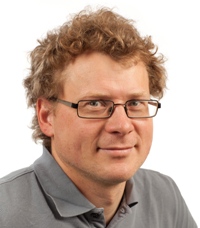
Business Information Systems utilizing the Future Internet
The "Internet of Things" (IoT) has come to describe a new paradigm that enables the Internet to reach out into the real world of physical objects. Technologies like RFID, short-range wireless communication, real-time localization and sensor networks are becoming increasingly common and turning IoT into reality. It is expected to grow rapidly into a huge new market domain that may lead to disruptive changes in areas such as logistics, energy management and healthcare. Mobile and collaborative applications and services utilizing information processing and process support enabled by sensor data from a vast numbers of connected and cheap devices will change many markets when being made more easily available. New event-driven architectures (EDA) providing varied information to support collaborative decision-making enable more decisions to be made closer to the problem owner. The expected impacts of the combination of IoT and EDA on business and society are formidable. It also opens the possibility to take into account additional input from users to ensure shorter turnaround from ideas to new, personalized information systems support.
Future business information systems will need to take this situation into account, addressing both technological and conceptual challenges. The presentation will focus on the latter, discussing in particular the potential role of model-based techniques and how to assess and improve the quality of models and modelling approaches in this setting.
|
|
Prof. Dr. John KrogstieNorwegian University of Science and Technology, Trondheim, Norway
John Krogstie holds a PhD (1995) and a MSc (1991) in information systems from the Norwegian University of Science and Technology (NTNU), where he is currently a full professor in information systems. John Krogstie is the Norwegian representative for IFIP TC8 and chair of IFIP WG 8.1 on information system design and evaluations. His research interests is modelling of information systems, mobile information systems and eGovernment systems. He has published around 170 refereed papers in journals, books and archival proceedings since 1991, and has a H-index of 20 (based on Google scholar) |













